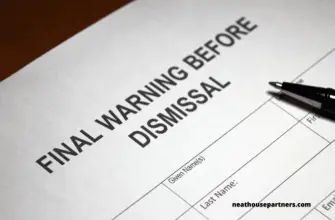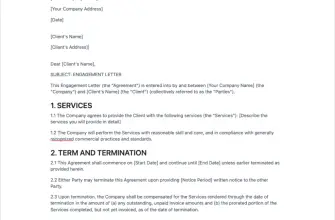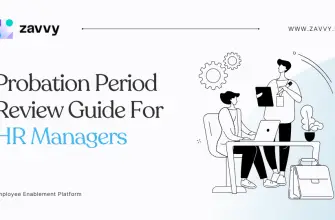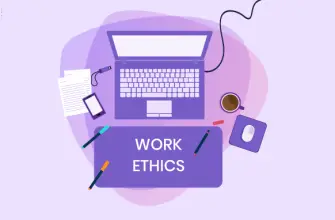It is against the law in the United Kingdom to discriminate against employees due to their age, gender, disability, race, or faith in the workplace. This involves being biased against someone because of the stereotype that they share a certain trait. This manual provides an overview of the law regarding Perceptive Discrimination and how it protects job candidates and employees from harassment and other unfair treatment. We also look at the employer’s responsibilities regarding discrimination by perception and the most prevalent areas of risk in this area, as well as ways to lessen the likelihood of discriminatory actions taking place at work and the proper way to handle complaints of this nature.
What is Perceptive Discrimination?

Perceptive discrimination occurs when an employee is treated less favorably because of a protected trait. The phrase Perceptive discrimination describes this phenomenon in the law. Disability, race, faith, and belief are examples of identities guaranteed protection under the law.
The presence or absence of a protected characteristic distinguishes Perceptive Discrimination from other forms of direct prejudice. Direct discrimination occurs when a company does not hire someone due to that person’s protected status. Perceptive Discrimination occurs when someone is treated differently because you assume they possess a legally protected characteristic when they do not.
Keep in mind that unique experiences often shape what amounts to discrimination. One worker can believe they’ve received less favorable treatment than another, even though they may have identical performance reviews. If a problem is reported, it must be investigated thoroughly and fairly.
Examples of Discrimination in Perception:
To better grasp the mechanism of Perceptive Discrimination, it may be useful to examine some instances. A female worker is observed by her boss strolling hand in hand with another female colleague. They figure out she is in a lesbian partnership and adjust her responsibilities accordingly. The two women genuinely were sisters, and the worker was not gay.
She experienced bias because of her sexual orientation. The hiring manager notices the Arabic name on the resume. The hiring manager was informed of their decision not to interview the applicant because they believed Muslims would need excessive time off for religious observances.
The candidate in the issue has experienced religiously motivated bias despite not being Muslim. A promising female employee was set to embark on a high-profile secondment overseas. She manages to put on some weight rapidly. Her boss wrongly assumes she is pregnant and offers the chance to another employee out of concern that she may be unable to make the trip. She experiences stigmatization because of her pregnancy.
Perceptive discrimination in the Workplace
Employers and coworkers cannot treat you differently because of your age, gender, race, national origin, faith, skin color, or mental or physical disability, according to federal law. These groups are considered “protected classes” because they largely consist of inalienable characteristics that define individuals and may be fundamental to their identity. Additionally, pregnancy, childbirth, and other associated medical conditions are now covered by sex-based protections thanks to an amendment to Title VII of the 1964 Civil Rights Act.
Perceptive Discrimination based on these categories, whether in the form of abusive comments, threats, or limited chances in the workplace, has been shown repeatedly in scientific studies to cause a wide range of mental and physical health issues in its targets. Discrimination victims often report ongoing trauma, including physical injury and mental symptoms like post-traumatic stress disorder, long after they have left a hostile job environment.
Some of the most typical examples of bias in the workplace include:
- Discriminating against you because of your membership in a legally protected group, such as by enforcing strict dress standards or other requirements at work
- The use of insulting language about your distinctions
- Interviewer prejudice preventing you from being seriously considered for the position
- Being disciplined more harshly than other workers who are not members of your protected class for the same offenses
- Taking deliberate steps to prevent your promotion within the business
- Intentionally directing threats, insults, and physical violence toward you
- Not giving you any perks, including raises and promotions
- Throughout the interview, asking queries that are inappropriate, invasive, or offensive
- Taking any action against you as retaliation for reporting abuse to HR or the EEOC.
Perceptive discrimination: A History
Associational and perceptual biases have been around for a while and have even been codified in the case of law, albeit with restricted scope. The government eventually rethought the legislation, including perceptive discrimination by association and perception under the Equality Act of 2010.
Constitutional Law
Chief Constable of Norfolk v. Coffey is an engaging case because it addresses prejudice based on how people perceive others. The Employment Appeal Tribunal ruled that it constitutes direct discrimination to reject a job candidate due to bias regarding a condition that could develop into a disability in the future.
Mrs. Coffey worked for the Wiltshire Constabulary and was recently promoted to police constable. She was compelled to get checked out by a doctor as part of this procedure, and it was determined that her hearing wasn’t up to Home Office standards. The Wiltshire Constabulary organized for Mrs. Coffey to take a functional assessment, which she passed. Mrs. Coffey had no problems in her role as a police officer. Mrs. Coffey later requested a move to the Norfolk Constabulary. She was re-examined medically as part of this procedure.
However, Norfolk Constabulary turned down her transfer request because her degenerative hearing loss would require her to perform only limited tasks in the future. Mrs. Coffey later filed a lawsuit alleging she was the victim of prejudice because of her disability. Due to her degenerative hearing condition, Norfolk Constabulary treated Mrs. Coffey differently because she was seen as possibly disabled. The Employment Appeal Tribunal supported the decision because, even though Mrs. Coffey was neither disabled nor expected to become so shortly, Norfolk Constabulary’s perception-based action constituted direct perception discrimination. Perspective discrimination can be challenging and typically only occurs in rare instances. As a result, it becomes trickier for businesses to know when they might be held responsible for an allegation of discrimination based on the employee’s subjective experience. In such a situation, businesses should always consult an attorney.
Strategies for avoiding Perceptive Discrimination

Written procedures and a record of decisions made are vital first steps. When it comes to prejudice, bullying, and harassment in the workplace, companies should set a firm zero-tolerance policy. No employee deserves to be subjected to this behavior at work regardless of their relevant protected trait or personal circumstances.
Thus, it is imperative for businesses to not only establish policies but also make them known and adhered to by their employees. All employees should know the consequences of such behavior.
Make sure your supervisors have received adequate training in handling Perceptive Discrimination complaints. Educating recruiters on diversity and inclusion policies and procedures is important. Addressing overt and covert forms of prejudice will help ensure a fair recruiting process. In addition to providing equal chances for all, a diverse workforce can help decrease the likelihood of perceived discrimination. Take care to observe due process when dealing with cases of discrimination. Always think of any fair accommodations that could be made in a situation involving a disability or health problem.
How does the law safeguard workers from Perceptive discrimination?
Job seekers and employees are safeguarded from any form of prejudice, including perceptual discrimination, by the Equality Act of 2010. Suppose an employer “because of a protected trait” treats an applicant or employee with discrimination more than they treat or would treat others in the workplace. In that case, that employer will be liable for direct discrimination under section 13(1) of the Act. According to the law, this constitutes perception discrimination against the complainant, who can seek redress through the employment commission.
Although the Act of 2010 does not define perceptual discrimination, it implicitly prohibits discrimination based on perception when the phrase “because of a protected trait” is included in the broad statutory definition of perceived discrimination. That’s because the person claiming discrimination doesn’t have to prove they have the protected trait based on their claim of unfair treatment. The emphasis of the employment tribunal will be on the relationship between the perceived characteristic and the treatment, not on whether or not discrimination occurred.
Perceived discrimination in the workplace can take many forms, including unfavorable treatment in employment terms and conditions, pay and benefits, advancement and transfer opportunities, training and recruitment, and termination and redundancy.
If an employee is fired or resigned because of their perceived possession of a protected trait, this constitutes unlawful discrimination and inherently unfair termination of employment. The Act also protects individuals from harassment and victimization based on the person’s perception of another’s protected trait. Harassment and discrimination occur when a person is subjected to repeated, hostile actions because of who they are or what they look like, which violates their dignity or creates an offensive atmosphere. If a person suffers negative consequences after reporting prejudice or harassment, they have been victimized.
Perceptive discriminatory Workplace Rules and Practices
Discrimination in the workplace is illegal at any point between hiring and termination. It is illegal for an employer to treat an applicant, employee, or applicant for a raise any differently because they fall under a legally protected category.
Typical examples of perceived discrimination in the workplace are as follows.
- The company has a dress code that doesn’t consider the religious clothing needs of some of its workers.
- Inquiring about a pregnant applicant’s marital situation and plans for child care while at work.
- Refusing to modify an office so that a wheelchair user can work
- Choosing a younger, less experienced worker for a promotion over a more experienced one who is close to retirement age
- Turning down a female applicant because the work is too physically demanding is sexism.
- Getting rid of a worker who has complained about being bullied by a coworker
Guide to Report the Discrimination
Both the EEOC and state labor departments handle allegations of workplace perception discrimination. Following this procedure will ensure that your report reaches the appropriate department.
Acquire data
The discriminated individual and the company you are complaining against should have their full names, addresses, and phone numbers included. But it can be helpful to have the names and numbers of people who saw the mistreatment or unfair treatment happen.
Keep a journal of your travels and adventures.
Briefly describe the incident that prompted your report is required. Specifics like when, where, and who should be included. To prove harassment, you must demonstrate that the unwanted contact or behavior occurred repeatedly. It will lend credence to claims of ongoing animosity.
Send in your data
Your final incident report should be sent to the chosen group. A referral or specific form is not required to file a complaint. Find your state’s employment agency or your nearest Equal Employment Opportunity Commission location.
FAQ’s
What is perceptive Discrimination?
Perception discrimination is an example of direct discrimination.
Perceived discrimination occurs when a claimant receives less favorable treatment due to the respondent’s incorrect assumption that the claimant possesses a legally protected trait.
When it comes to discrimination, which traits are safe from being misinterpreted?
Perceived discrimination based on age, disability, gender reassignment, race, religion or belief, sex or sexual orientation, and so on is prohibited by the Equality Act of 2010, which also prohibits direct discrimination in the workplace.
What recourse does a worker have who suspects discrimination on the job?
Dealing with discrimination on the job can be challenging and upsetting. Despite this, it is regrettably still widespread throughout Australian workplaces. When an individual experiences discrimination on the job, they should first talk to someone outside of their organization. By doing so, they can step back and assess whether or not what has transpired constitutes illegal activity.
The next stage is to talk to a manager about your issue and see if you can work something out amicably. If you’re still interested in taking this further after reading this, it’s recommended that you speak with a job attorney.
What kinds of discrimination have you seen?
Direct discrimination typically takes the form of a company not hiring someone because of their race, sexual orientation, or pregnancy status, all of which are protected characteristics under the Equality Act of 2010.









